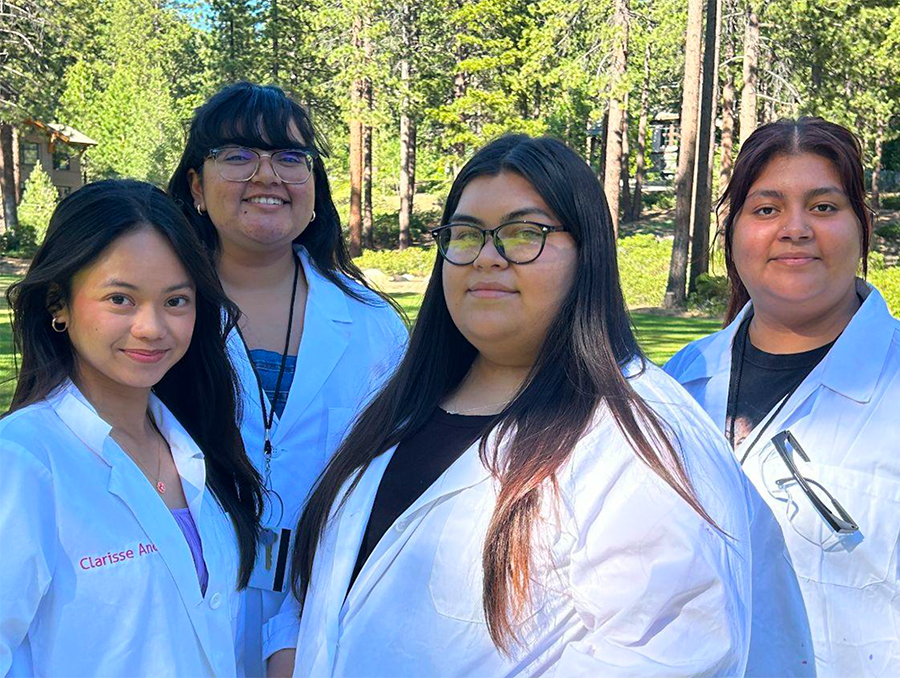Investing in Women's Health: Let's start by addressing our iron levels
Global researcher and advocate for the improvement of child and maternal nutrition, Angeline Jeyakumar, discusses iron deficiency, a common issue in women's health, for National Women's Health Month
May is designated as National Women’s Health Month, a time to raise awareness about the various health concerns that impact women across all age groups. This commemoration reminds women to prioritize their overall wellbeing and seek proper medical care whenever necessary.
This year, the Office on Women’s Health, a part of the U.S. Department of Health and Human Services and the agency overseeing the National Women’s Health Week from May 12 to 18, aims to “empower women to take charge of their health journeys and shine a light on health issues unique to women.” The agency also indicated on its website that it hopes that this year’s commemoration will set the stage for women to freely voice their health needs and concerns.
While contemplating this year’s theme, an issue came to mind – iron deficiency – often stigmatized and seldom openly discussed by women due to its association with menstrual bleeding and socioeconomic ranking. Yet, it is an issue that warrants the attention of public health stakeholders.
Iron deficiency anemia, a condition in which blood lacks adequate healthy red blood cells, stands out as an endemic nutritional, lifestyle and biological issue among women from all backgrounds. Women of reproductive ages and those approaching menopause are particularly at risk due to factors such as heavy menstrual bleeding and the increased demand for iron as gestational age increases. A 2022 Centers for Disease Control study found that anemia prevalence among pregnant women enrolled in the Women, Infants and Children Program increased 13% from 2008 to 2018 while a survey by the same agency found that a total of about 250,000 women between ages 25 and 64 visited a physician’s office for anemia-related issues in 2016 and in 2021, about 38,000 women in the same age range visited an emergency room for similar issues. Young women are not spared. Studies show that 40% of young women between ages 12 and 21 suffered from anemia resulting from insufficient iron levels. Yet with these concerning statistics, in a country with advanced medical care, the health agency revealed that surveillance of anemia during pregnancy in the U.S. is limited, highlighting a gap in monitoring and addressing this crucial issue.
Although anemia is categorized as a nutritional deficiency, it is a chronic condition that frequently presents hidden symptoms. In the absence of coordinated national efforts to effectively manage iron loss, women must take proactive measures to increase nutritional and health awareness.
Here are a few practical steps to increase iron intake and eat healthily:
- Pack up on iron-rich foods – incorporating green leafy vegetables, sprouted and fermented foods into your diet can enhance the absorption of iron into the body.
- Have a nourishing beginning to your day – opting for a breakfast rich protein and micronutrient-packed vegetables offers a healthier alternative to processed cereals. Beware of cereals that claim high iron content; their hidden sugars may contribute to health issues such as obesity and diabetes. Legumes such as lentils are a better breakfast option as they are rich in fiber, protein, vitamins and minerals while low in fat. They also contain complex carbohydrates, offering sustained energy.
- Making healthier food choices – monitoring grocery purchases and opting for cooked meals using fresh produce improves nutrition and reduces consumption of unhealthy additives and preservatives in processed foods. Fresh fruits, vegetables, lean proteins and whole grains provide a variety of vitamins, minerals and antioxidants that promote overall health.
- While fad diets promise quick weight loss, their effects are short-lived. It is important to adopt a sustainable dietary pattern for long-term health. This includes eating balanced food choices, portion control and nutrient-dense foods.
- Regular exercise stimulates the cardiovascular system, leading to better circulation and oxygen delivery throughout the body. This enhances endurance, stamina and energy levels. A combination of aerobics, strength training and flexibility exercises maximizes these benefits. Obesity, on the other hand, hinders the absorption and usage of iron, making it a risk factor for anemia.
- Excessive alcohol intake and smoking cigarettes can hinder the body from absorbing important nutrients, vitamins and minerals such as vitamin B12, folate and calcium, which are necessary for overall well-being. Limiting alcohol consumption and practicing moderation can preserve nutrient absorption and promote good health.
In line with this year’s theme, I urge women to actively educate themselves about their bodies. It is important for them to openly communicate their health concerns with medical experts without any fear of judgment or negative consequences that may impact their professional or social lives. Women, let us take a proactive approach and regularly monitor our iron levels if we experience any concerning symptoms such as extreme fatigue, numbness or tingling sensations in the hands and feet, dizziness, changes in the color of the whites of our eyes, pale skin and other related issues.
About the author
Angeline Jeyakumar is a global researcher and advocate for the improvement of child and maternal nutrition. She currently serves as a public health nutrition specialist for the University of Nevada, Reno Extension and is an assistant professor in the College of Agriculture, Biotechnology & Natural Resources’ Department of Nutrition. Read more about her background.

















